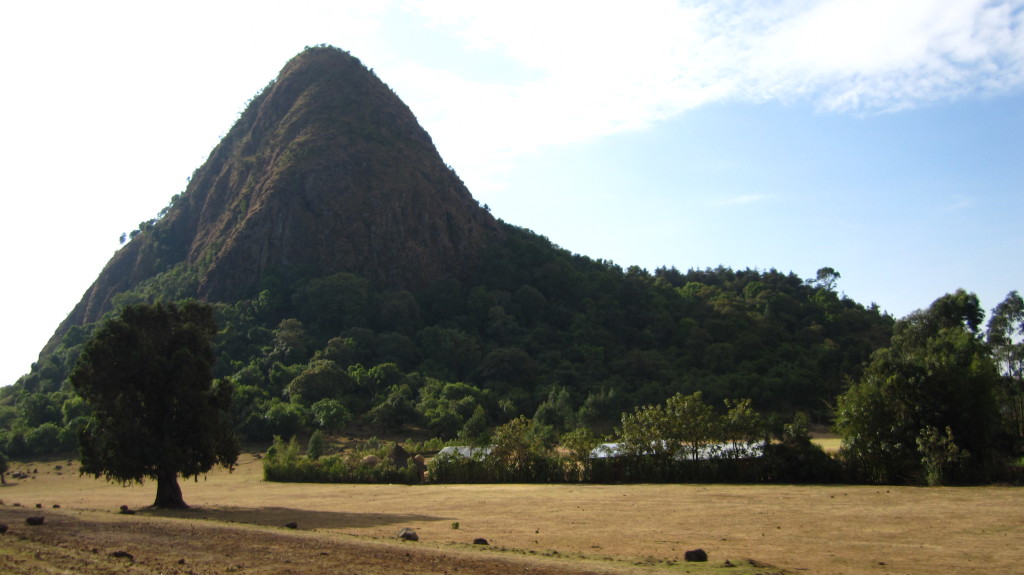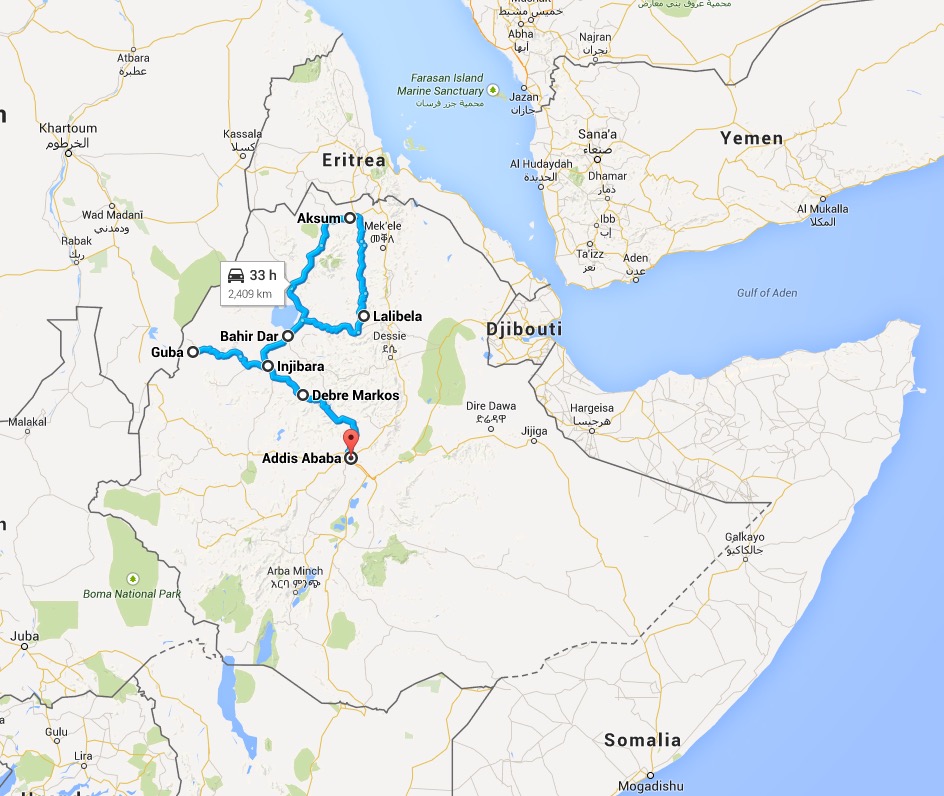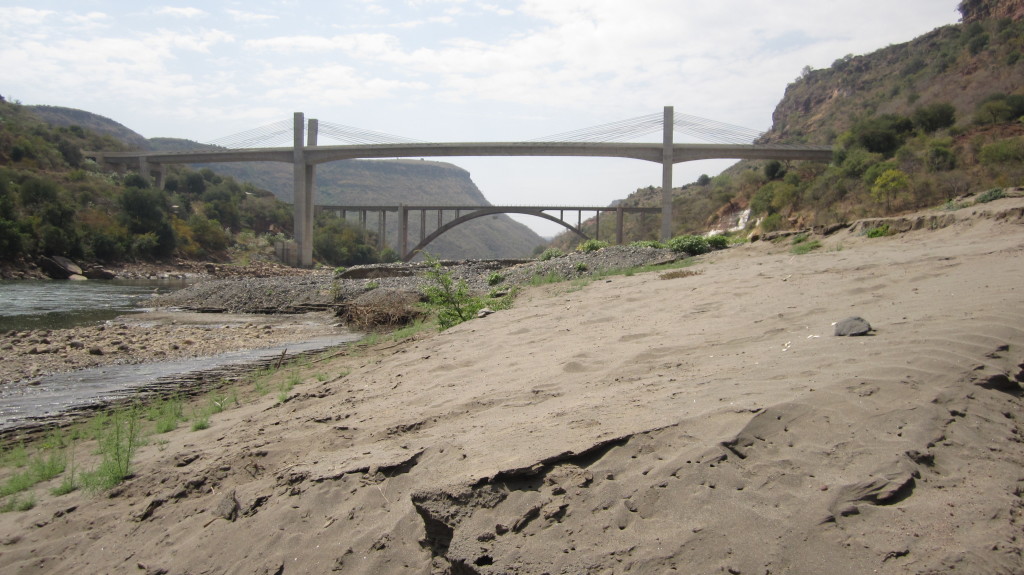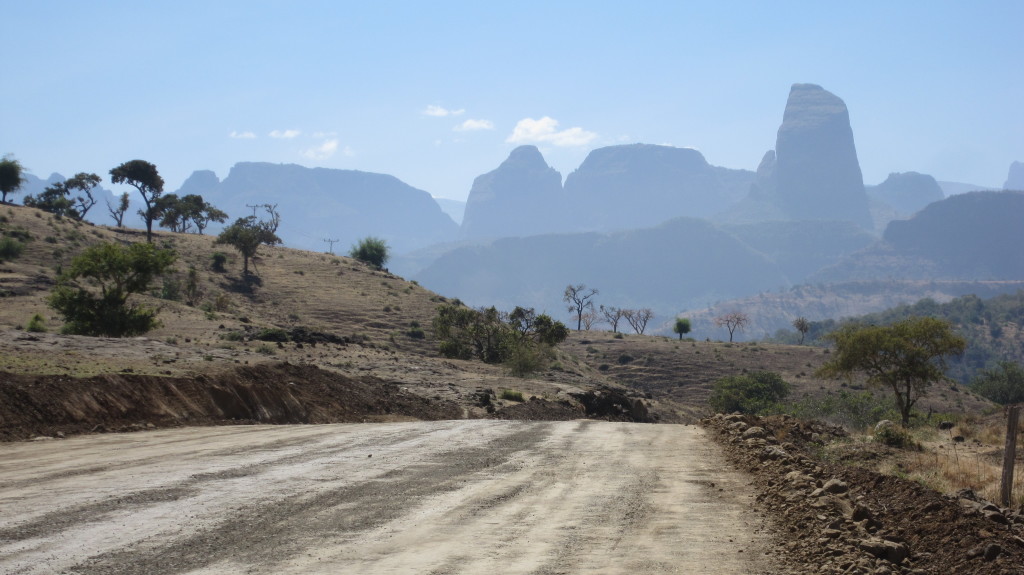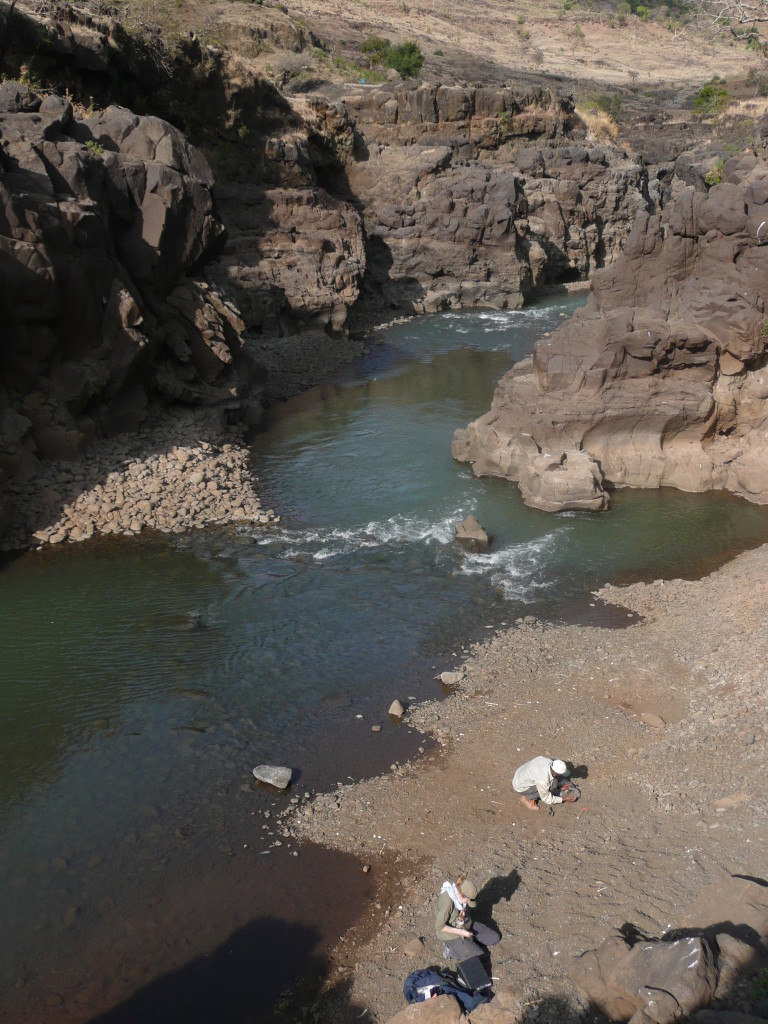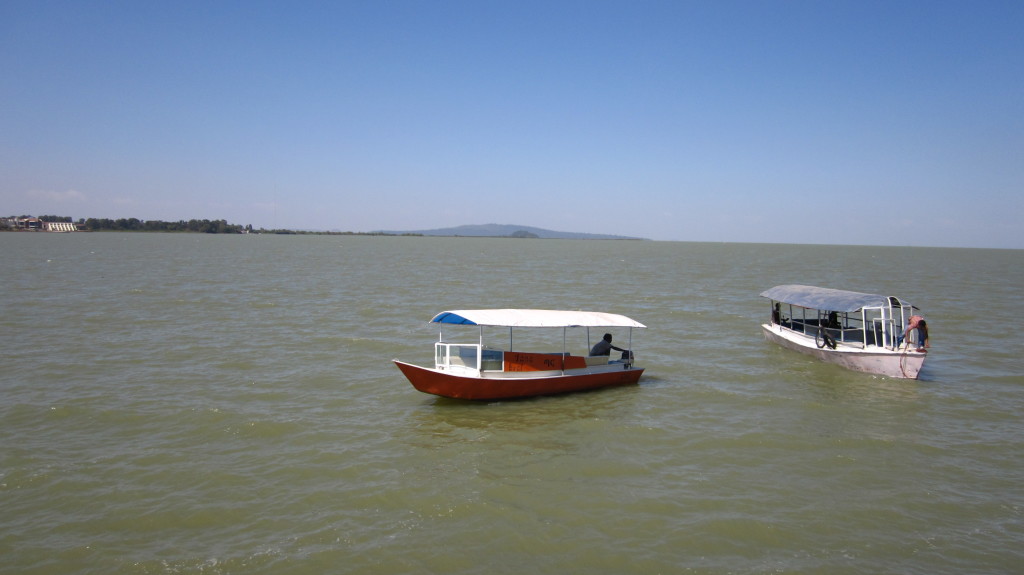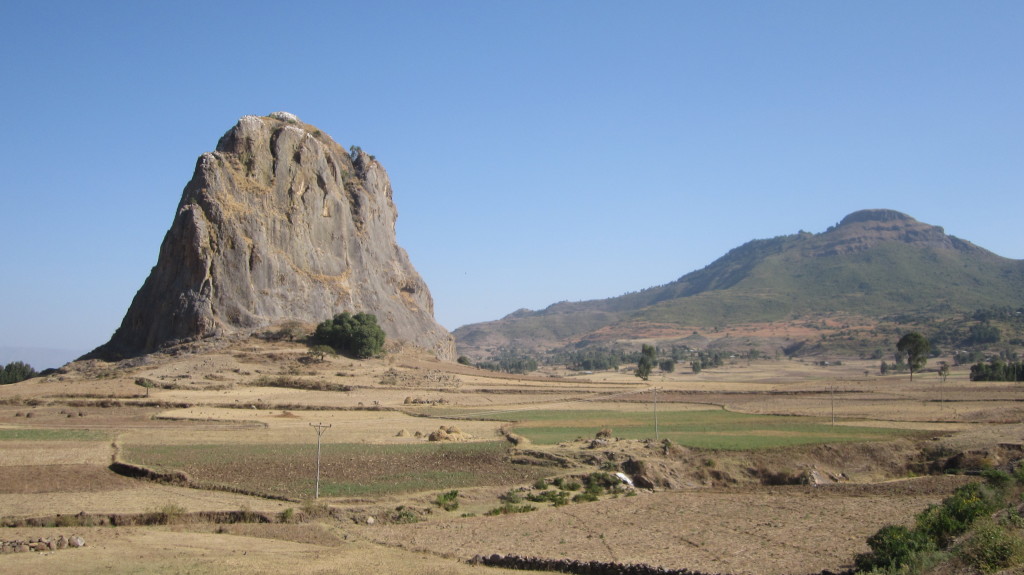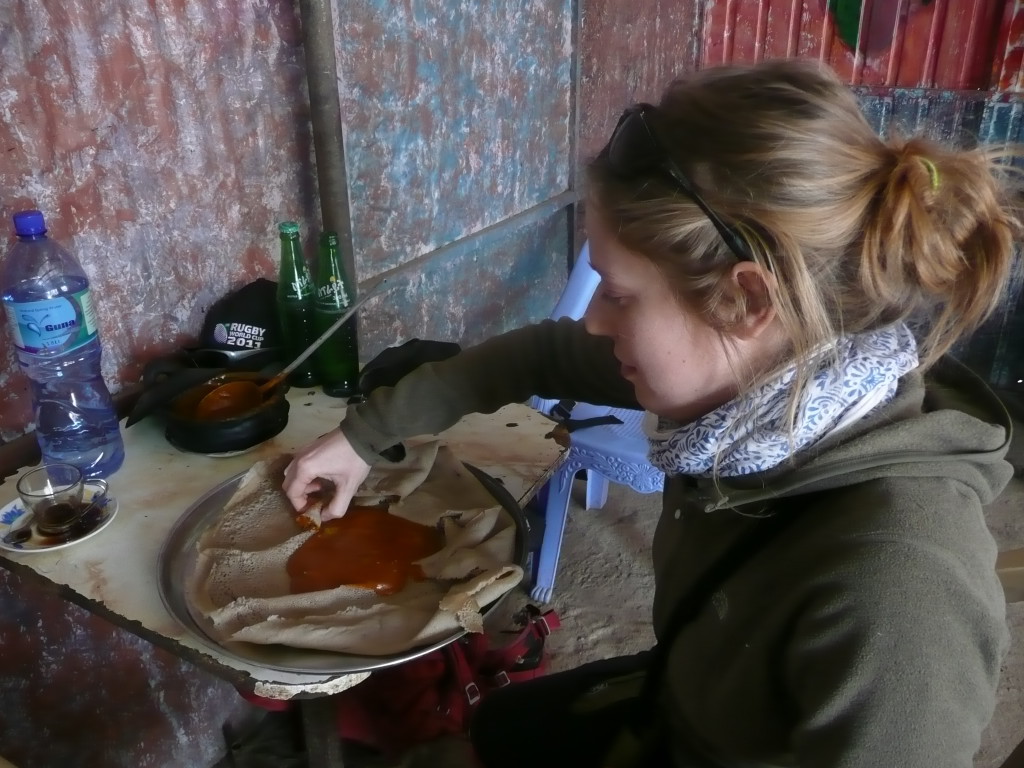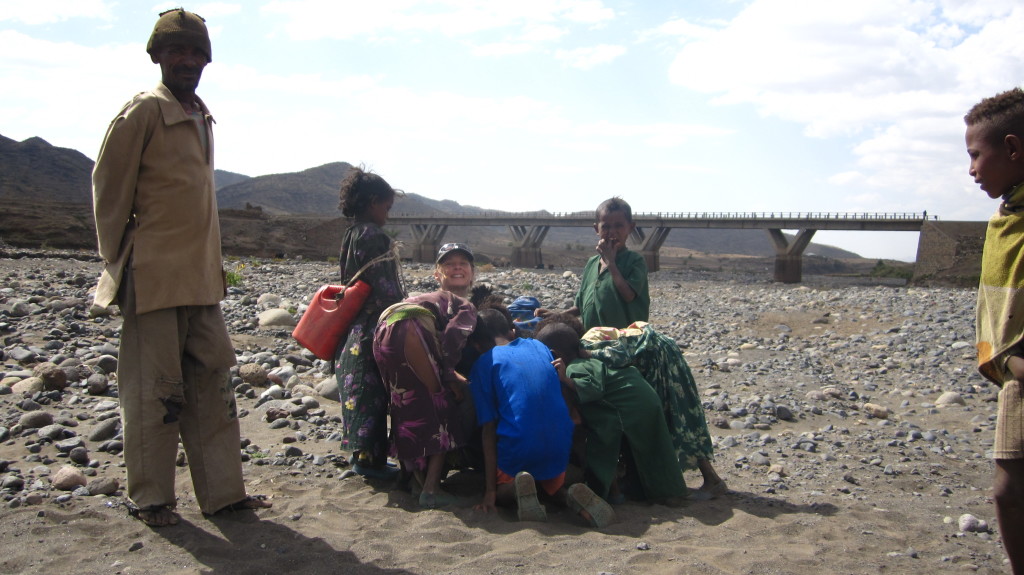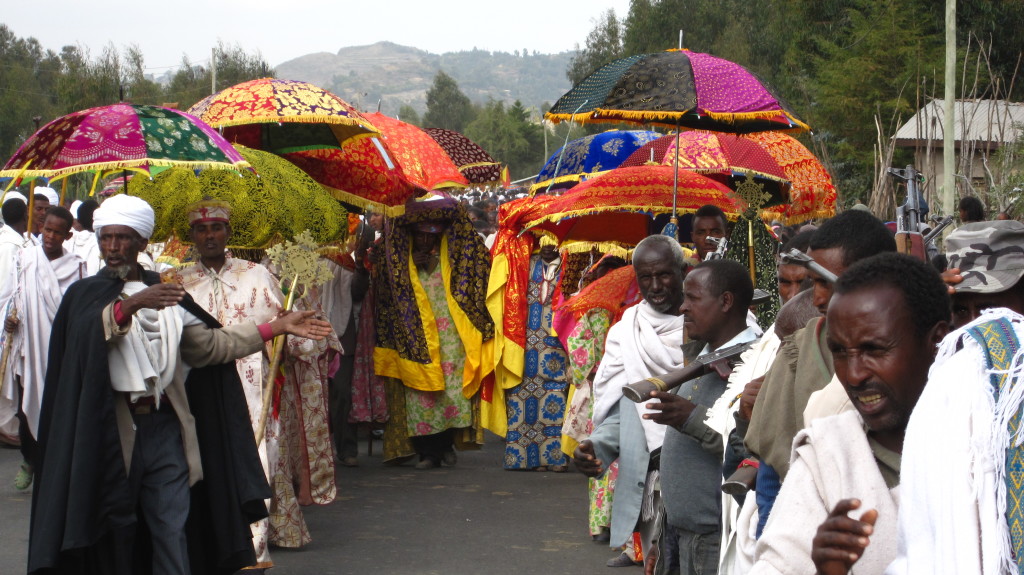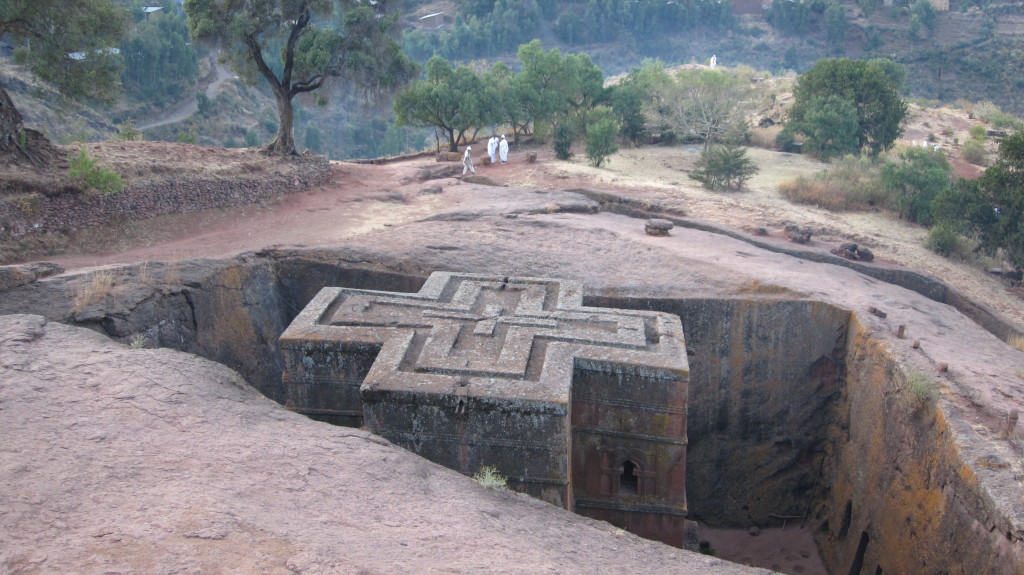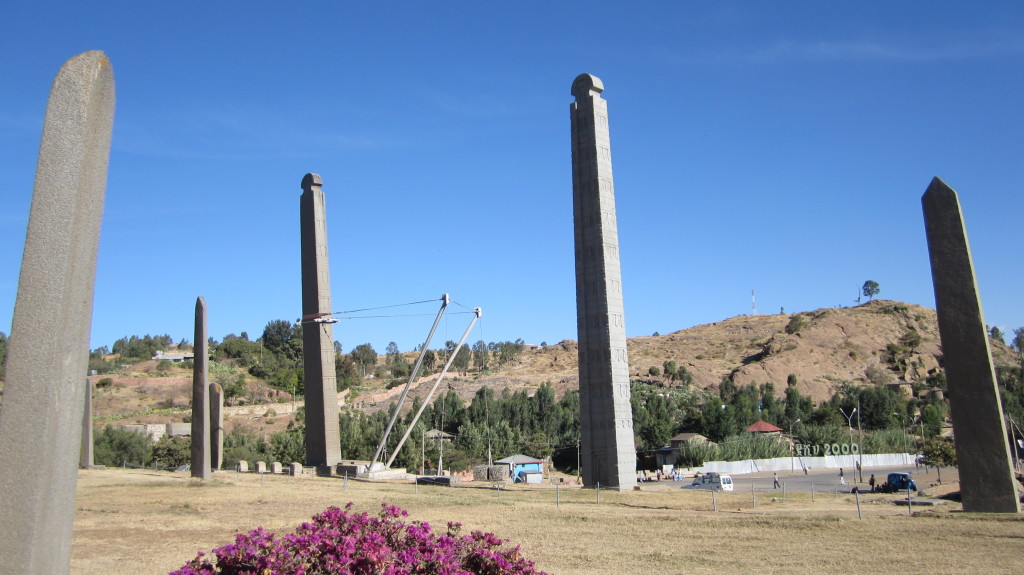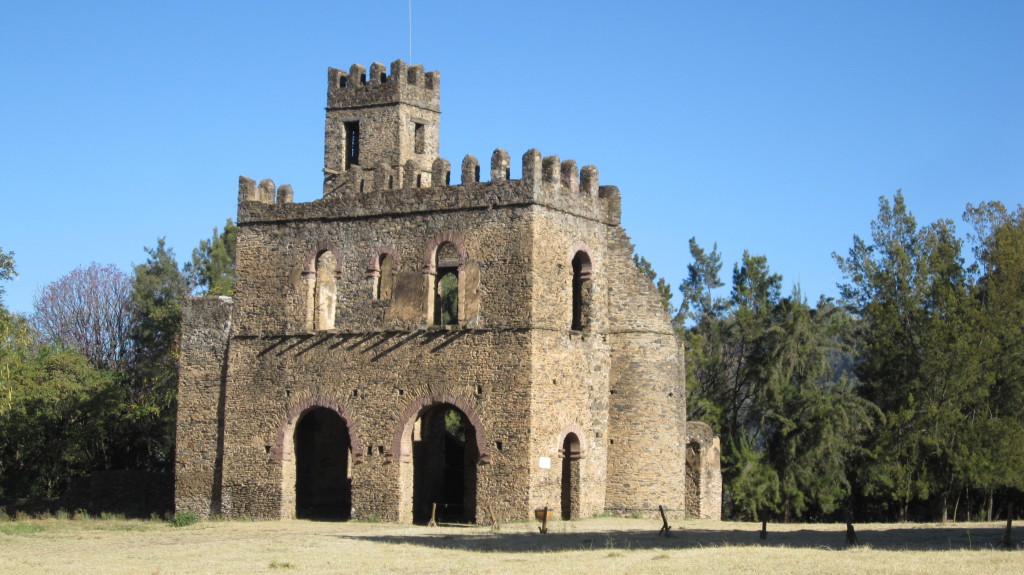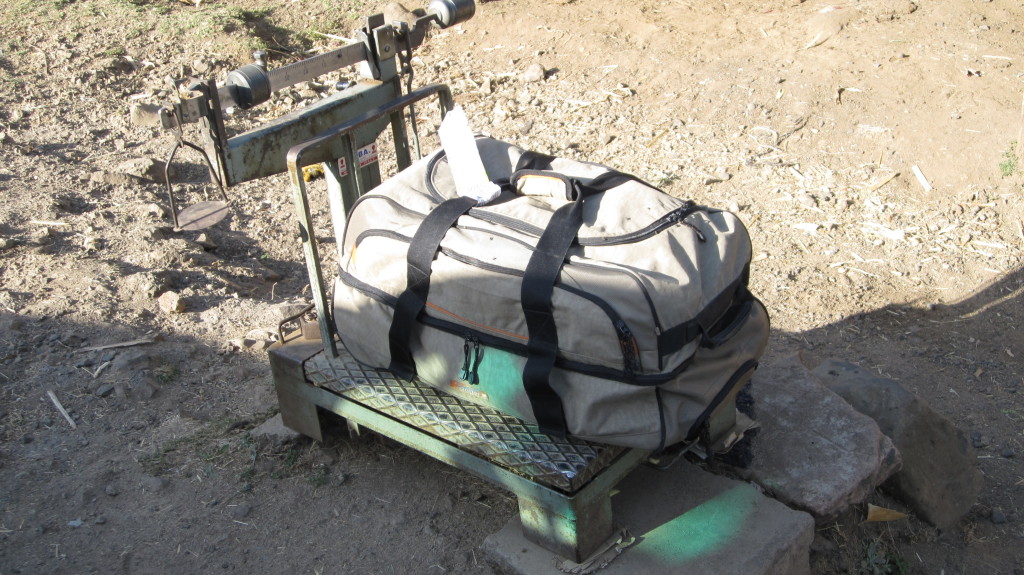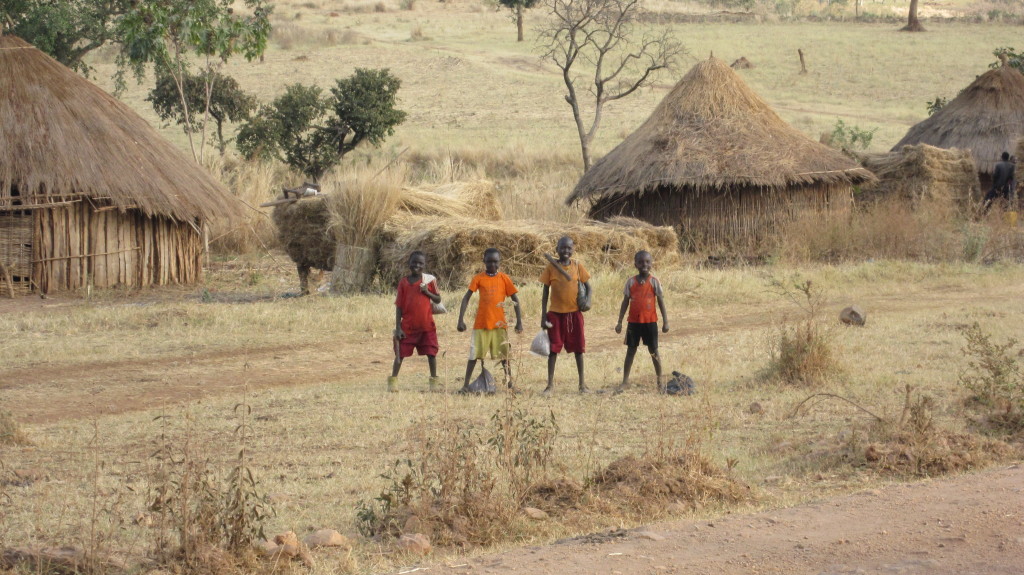Laura Fielding is a PhD student at Lancaster University documenting the palaeodrainage history of the Nile River. You can read more about her research here.
In January 2011 I set off on what was to be the first of four field trips as part of my PhD studying the provenance of the Nile delta cone sediments. Modern river sediments are increasingly used to efficiently sample large areas of upstream crust in order to determine a region’s large scale past and current tectonics. My supervisor Yani Najman and I left Lancaster University and headed for the Ethiopian Highlands to conduct a sampling and reconnaissance trip collecting both sand and mud samples in order to characterise the Ethiopian Highlands catchment area.
Once we arrived in Addis and met with our guide Tadesse from Addis Ababa University we set off north in our Land Cruiser with a slightly miffed driver whom we would to be saying goodbye to just two days later!
Our first stop was at the Blue Nile gorge (below), where we realised sampling near bridges along the way was going to be trickier than anticipated due to security issues, but nevertheless, I managed to snap a few photos along the way…
Above: The road to Guba where we collected one of our most useful samples from the Blue Nile, just before it leaves Ethiopia and enters Sudan, thus capturing the entire catchment area of the Blue Nile in Ethiopia. It was at this point that our driver had a bit of a hissy fit and abandoned us. It turns out a geology trip and a tourist trip differ somewhat… early mornings and day-long drives were not what our driver signed up for so we were left in Guba and told to wait for a new driver to come and pick us up. Luckily this worked in our favour as a brand spanking new Land Cruiser turned up complete with A/C and a VERY chatty driver!
Moving further north, we eventually came to the source of the Blue Nile, Lake Tana and the city of Bahir Dar.
Some of the culinary delights on our travels. Injera is a sourdough-risen flatbread with a unique, slightly spongy texture, usually made from iron-rich ‘teff’ flour. Most of the time we went for the veggie option for the filling which was usually a kind of dahl/stew made from lentils. As it is considered impolite to eat using your left hand in Ethiopia, my lefty supervisor Yani had some difficulties!
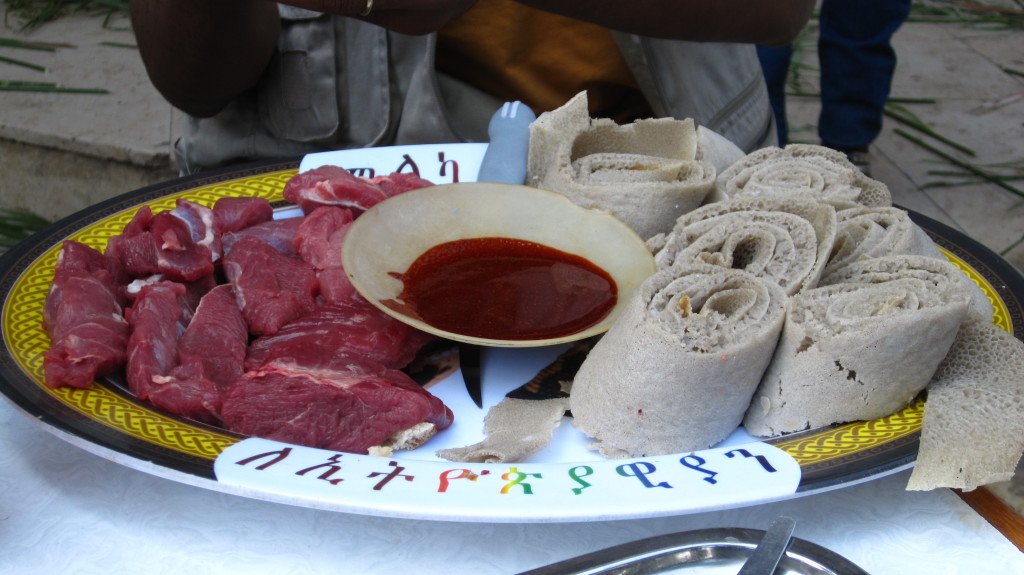
Our guide on the other hand was definitely not a vegetarian and quite often ordered a nice plate of raw goat washed down with a spicy sauce and some injera.
We happened across a small town called Lalibella, famous for its rock-cut churches carved out of the bedrock. Lalibella is one of the holiest cities in Ethiopia and our visit coincided with Epiphany celebrations that involved moving a model of the Ark of the Covenant (present on every Ethiopian altar) wrapped in cloth and borne in a procession on the head of the priest through the town.
Eventually we came to Aksum, the most northerly point in our trip. Here we were able to sample the Tekeze River which drains the northern part of the Ethiopian Highlands and consists predominantly of Mesozoic cover and Cenozoic basalts. Aksum, is famous for its obelisks, the largest of which is a 24m tall, 160 tonnes and approximately 1,700 years old.
Finally we began to head south and back towards the capital. A night was spent in Gondar – a city just north of Lake Tana on the Lesser Angereb River and southwest of the Simien Mountains. It previously served as the capital of the Ethiopian empire and is home to Guzara Castle, a former Imperial residence said to have been built by Emperor Sarsa Dengel.
As we headed back towards Addis Ababa we stopped to weigh our samples at a local grain market using one of their larger set of scales.
All in all a pretty leisurely trip and some great samples to take home. Next stop, the Red Sea Hills of Egypt!
![]() This work is licensed under a Creative Commons Attribution-NonCommercial-ShareAlike 4.0 International License.
This work is licensed under a Creative Commons Attribution-NonCommercial-ShareAlike 4.0 International License.

